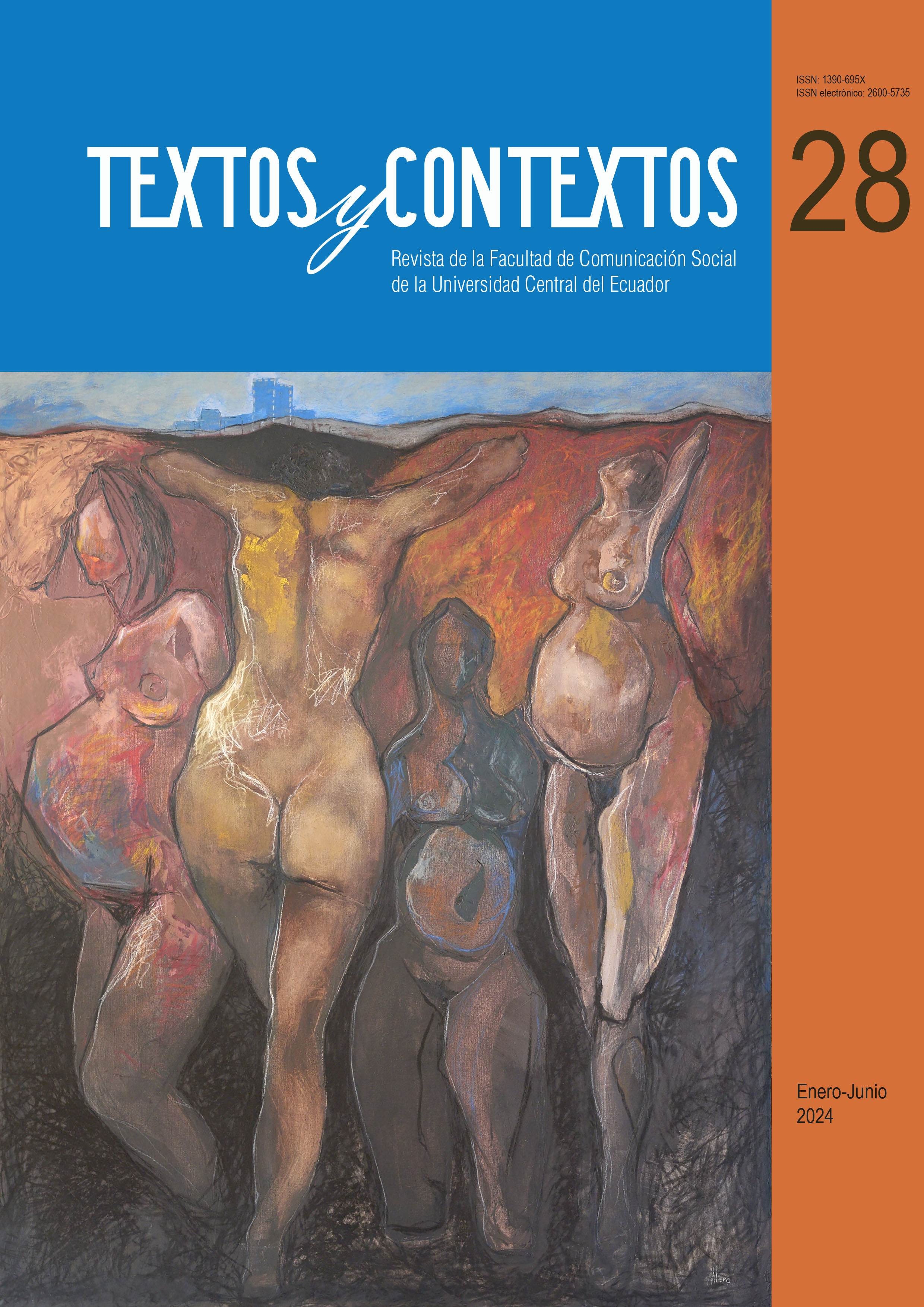The role of narrative journalism and its narratives of interculturality within the digital age of immediacy.
Main Article Content
Abstract
This article examines the content of three digital media outlets that have embraced narrative journalism as a format to challenge the informative conventions of the digital age of immediacy. Nine articles, including chronicles and reports, from the media outlets Bagre Digital Magazine, Mundo Diners Magazine, and GK are analyzed. These outlets have addressed interculturality through the narrative richness allowed by the so-called long-form journalism. Additionally, through a literature review on the characteristics of narrative journalism, journalism in the digital age, and the role of journalism in reporting on interculturality, the article aims to establish initial insights into the role of narrative journalism in the digital age of immediacy. In the case of interculturality, it explores how this approach contributes to the representation of cultural encounters and clashes in our country.
Downloads
Metrics
Article Details

This work is licensed under a Creative Commons Attribution-NonCommercial 4.0 International License.
References
Aguilar, R. (12 de abril de 2022). Naruka, la pesadilla sapara. GK.
Alsina, M., & Morla, C. (2001). Medios de Comunicación e Interculturalidad. Cuadernos. Info.
Bagre Revista Digital. (2022). Manifiesto. Bagrelife.
Constitución de la República del Ecuador. (2008). Constitución de la República del Ecuador.
Cortez, N. (15 de septiembre de 2022). En busca de una doble aceptación. GK.
Fundación Gabo. (2017). Las etapas del periodismo narrativo según Leila Guerriero. Colombia. Obtenido de https://fundaciongabo.org/es/noticias/articulo/las-etapas-del-periodismo-narrativo-segun-leila-guerriero
García Canclini, N. (2004). Diferentes, desiguales y desconectados. Editorial Gedisa.
Grimson, A. (2001). Interculturalidad y Comunicación. Grupo Editorial Norma. Obtenido de https://books.google.es/books?hl=es&lr=lang_es&id=bg9V1Zrc5t0C&oi=fnd&pg=PA13&dq=interculturalidad&ots=tacxkU3pBk&sig=iQwJ0ycNr4hX-jCo0WMpoLT_G6c#v=onepage&q=interculturalidad&f=false
Hungría, I. (2022). ¡Juyayay Ambatillo! Bagre Revista Digital.
Hungría, I. (2023). Yo estuve en la Diablada de Píllaro. Bagre Revista Digital.
Lojano, M. (16 de septiembre de 2022). El trombón de 1500 kilómetros. GK.
Meléndez, Á. (2022). Llegó la hora de revalorizar y celebrar la moda andina. Revista Mundo Diners.
Mundo Diners. (2022). Uchumanka, ese rico plato poco conocido de Napo. Revista Mundo Diners.
Mundo Diners. (2023). Shuar Num, un puente entre la cultura y la economía shuar. Revista Mundo Diners.
Mundo Diners. (s.f). Nosotros. Revista Mundo Diners.
Quiroz, R. (2014). Las redes sociales como herramientas del periodismo digital. Perú: Revista Cultura.
Rosique-Cedillo, G., & Barranquero-Carretero, A. (2015). Peirodismo lento en la era de la inmediatez. Experiencias en Iberoamérica. Profesional de la información. .
Sims, N. (1996). Los periodistas literarios o el arte del reportaje personal. Bogotá: El Áncora editores.
Solorzano, F. (2023). El Aromo, el pueblo de los que regresaron de Venezuela. Bagre Revista Digital.
Vázquez, D., Dután, W., & León, B. (2022). La Inmediatez y la Pérdida de Credibilidad en los Medios de Comunicación Multimedia del Cantón La Libertad. Revista Científica Arbitrada de Investigación en Comunicación, Marketing y Empresa REICOMUNICAR. Obtenido de https://reicomunicar.org/index.php/reicomunicar/article/view/90/167




